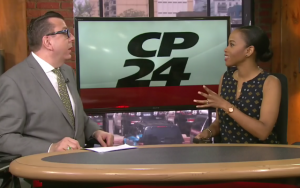Alice Through The Looking Glass, the six-years-in-the-making sequel to Tim Burton’s Alice in Wonderland, takes place in a world where chess pieces come to life and the Cheshire Cat’s grin is as toothy as ever. It’s a flight of fantasy, based on a story published by Lewis Carroll in 1871, but grounded by the very human character of Alice Kingsley.
Mia Wasikowska has played Alice since the 2010 film, signing on to the first movie when she was just 18 years old.
“There is always a little bit of trepidation especially when you’re dealing with a character who is so iconic and so beloved by so many people and so many generations,” she told me on the release of the first film.
“But there is also a certain amount of realism to it because you know you can’t please everyone and not everyone is going to be pleased so it is more just making the character your own and feeling comfortable in the decisions you make.”
Originally imagined by Carroll in 1865, the little girl who found a world of wonder down the rabbit hole has become one of literature and film’s more enduring and malleable characters.
She was the insane character of America McGee’s video game Alice and the martial arts instructor of a Syfy channel adaptation. In 2010 Wasikowska said she thinks the stories have lasted because people relate to the strange characters and situations.
“I don’t believe in normal,” she said. “Nobody is normal. Everyone is crazy in his or her own way. So although these are extreme characters I think that just makes them more identifiable.
People want to see these characters, understand these characters, love these characters, feel comfortable with these characters because they are like everybody in this world who are kind of crazy. Everyone has felt like an outsider at some time in their life so it is a very identifiable story.”
Alice first got the big screen treatment in 1903 in a 12-minute silent version starring Mabel Clark, who was also employed on the set as a “help-out girl,” making costumes and running errands.
In 1966 director Jonathan Miller cast Anne-Marie Mallik as the lead in Alice, a mad-as-a-hatter made-for-BBC movie. Miller called Mallik, who auditioned by reciting a poem, a “rather extraordinary, solemn child.”
Not everyone agreed. Peter Cook’s biographer described the teenager’s take on Alice as “sullen, pouting, pubescent with no sense of bewilderment.” Mallik later said she wasn’t impressed with her illustrious co-stars — John Gielgud as the Mock Turtle and Peter Sellers as the King of Hearts — because she had grown up surrounded by the very accomplished friends of her “much older” parents.
After production wrapped she “retired” from acting and afterward the BBC had trouble paying her a royalty because they couldn’t find her.
It’s hard to know what Alice Liddell, the young girl who inspired the character would have thought of any of the wild and wacky versions of the story, but we do know she enjoyed the 1933 Paramount version.
“I am delighted with the film and am now convinced that only through the medium of the talking picture art could this delicious fantasy be faithfully interpreted,” she told the New York Times. “Alice is a picture which represents a revolution in cinema history!”
 Richard and CP24 anchor Nneka Elliot talk about the weekend’s big releases, “X-Men Apocalypse,” starring Michael Fassbender and Jennifer Lawrence, Johnny Depp in “Alice Through the Looking Glass” and “Mr. Right,” starring Anna Kendrick and Sam Rockwell.
Richard and CP24 anchor Nneka Elliot talk about the weekend’s big releases, “X-Men Apocalypse,” starring Michael Fassbender and Jennifer Lawrence, Johnny Depp in “Alice Through the Looking Glass” and “Mr. Right,” starring Anna Kendrick and Sam Rockwell.

